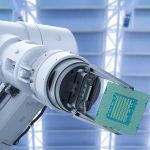XTEND Reality Inc., an emerging player in tactical robotics, is intensifying its move into the U.S. market after a $30 million extension to its Series B funding. This latest capital comes at a time when defense and public safety organizations face increasing demand for autonomous and AI-powered solutions that minimize risk to human lives. XTEND, originally a gaming company, is positioning itself to deliver scalable, real-time AI robotics for both defense and emergency response scenarios. The company’s newly inaugurated Tampa, Florida headquarters signals a significant investment in stateside production and job creation, providing potential opportunities for industry newcomers and seasoned professionals alike.
Earlier industry updates signaled XTEND’s growing footprint in coalition military forces, notably through contracts with the U.S. Department of Defense and Israel Defense Force. Past reports mainly focused on the deployment of XTEND’s Drone Hive technology and its unique XOS operating system, underscoring the company’s evolution from gaming roots to real-world defense applications. Compared to past investment rounds, this extension notably emphasizes XTEND’s shift from a hardware-dominant to a software- and services-oriented model, including a move toward a RaaS (Robotics-as-a-Service) structure and accelerated AI integration.
How does XTEND’s approach shape robotics supervision?
XTEND has advanced its XOS operating system to allow “human-supervised autonomy,” letting robots operate independently on routine tasks while humans oversee judgment-driven decisions. According to CEO Aviv Shapira, this framework enables supervisors to delegate hazardous or tedious processes like building scans and threat detection to robots, but retain control when new situations arise.
“However, crucially, it allows the ‘common sense’ decisions — like judging situations or adapting to unforeseen circumstances — to remain in the hands of human supervisors,”
Shapira said, highlighting the system’s flexibility.
What do new partnerships and leadership mean for XTEND?
The funding round, co-led by Aliya Capital Partners and Protego Ventures, brings strategic expertise in defense technology, AI, and national security to XTEND’s board. Ross Kestlin, CEO of Aliya Capital Partners, will now join XTEND’s board of directors, aiming to guide the company through accelerated growth. Other investors include Union-Tech Ventures, Claltech, and Chartered Group, each bringing experience in supporting security-focused high-tech ventures. The Tampa facility is projected to serve as a launchpad for expanding XTEND’s footprint in the U.S. and allied defense markets.
Can XTEND’s robotics platform adapt to broader markets?
The company’s roadmap includes applying its modular, AI-augmented platforms beyond military uses into humanitarian and emergency response contexts. XTEND continues to invest in user-friendly training and automation, seeking to reduce the barriers for operators who lack advanced robotics expertise. Its software upgrades now also allow a single supervisor to coordinate teams of robots in separate tasks, illustrating a pivot toward scalable solutions suitable for firefighting, disaster response, and public safety deployments.
XTEND’s investor feedback indicates traction with end-users—particularly in how AI-driven training shortens skill acquisition and allows non-specialist operators rapid proficiency. The transition to a RaaS model could open subscription-based revenue streams while ensuring customers receive regular system upgrades. This approach has become more attractive to military organizations and agencies that require cutting-edge technology with minimal deployment friction. Protego Ventures’ support reflects a broader trend for venture funding in advanced autonomous systems, not just as defense assets but as adaptable tools for security and safety missions.
Moving forward, XTEND’s expansion and adoption will be shaped by its ability to address both specialized military needs and the broader emergency response market. By balancing human oversight with autonomous operation, the company aims to deliver increased efficiency while maintaining ethical and operational safeguards. For organizations seeking to integrate robotics into hazardous and complex environments, XTEND’s XOS offers a model for effective collaboration between human and machine. Enterprises considering similar deployments should evaluate workforce training, integration with legacy systems, and potential for scalable upgrades when assessing AI-driven robotic solutions.
- XTEND raised $30M to boost U.S. production of tactical AI robots.
- The company’s XOS system enables human-supervised autonomous operations for defense and safety.
- XTEND targets broader use in emergency, public safety, and defense sectors.










